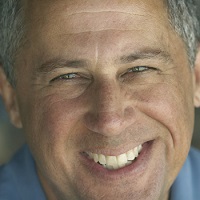Surrounding the thinking mind is a field of Silence.
In this field, we sense and feel a presence that is both us and larger than us––it encompasses everything. In fact, this Silence is the mother whose arms cradle all of existence.
When we put our attention on it, we immediately feel an unbreakable connection to life itself, a living bond with everyone and everything. This simple feeling of connection, this knowing that we belong, radically alters our priorities and goals, our values and motivations.
What is Silence?
Before I understood what Silence was, I decided to be silent as a practice, thinking that meant simply not speaking. I was initially silent for 30 days and then at another time for 45 days. This was years ago in India.
I would communicate with a little slate board and a piece of chalk. At that time, that’s what I thought observing Silence was. Now, I know that it’s something altogether different.
Silence is experiential unity with the flow of life. I exist in Silence. It is within, but it is equally outside of me.
The underlying truth of existence is Silence. The definition that points in the direction of Silence might be that which creates and holds everything in existence. Kabir, the 15th century Indian poet, says, “I reached that place inside me where the world is breathing.” That image evokes the truth of Silence. When life opens its secret to us, there is pure Silence––the transcendent experience of union with all of existence.
Silence Can Teach Us.
I remember feeling how difficult it was not to speak. There was a tremendous pressure in my mind that I had not ever been aware of before, the pressure of constant, automatic speaking.
In the beginning, I would always talk to myself because I was not able to dissipate this mental energy through talking to others. I started dialoguing with myself as a way of relieving my mental agitation. Eventually, all of that simply subsided.
After a while, I started noticing and feeling the place from where reaction and thought came from. I started noticing how patterns of expression, belief and identity would form. When you don’t project your internal process through speaking, you develop a capacity for observation that you otherwise wouldn’t have.
Using this power of observation, I could see so many ways in which I was purely reactive and unconscious. As I refrained from speaking, I began to notice and sense the outer world with much more clarity and precision. My capacity for awareness was no longer lost in the random, incessant thoughtstream of my mind and my feelings. I began to feel that my consciousness, which had been locked into my mind and my brain, was suddenly––through Silence––liberated.
As that happened, I was able to perceive other people’s motives and thoughts. I stopped listening to people’s words. I saw how disconnected they were from their own motives, intentions and purpose; everything was very subterranean. They were just communicating from this habitual mental pressure.
I would hear people, but what I needed to get by way of communication, I would get intuitively from their whole being. I also started to become very “psychic.” I began to read minds.
The barrier between me and other people dissolved. Their communication came directly into me. To this day, I hardly ever hear what people say, literally. I hear their whole being; their words often disguise rather than reveal their true message.
It began to move out of my body/mind, losing a sense of that being my boundary. My awareness seemed to grow bigger than my body, whereas before I felt encased in it. I felt I was non-localized, that wherever the center of my knowingness was, it certainly wasn’t specific to my body/mind anymore. Knowing came from everywhere, inside and out, here and there.
Overcoming Our Fears.
I remember being afraid, initially. When I started to observe my mind, it was very frightening. Even though we think we are intelligent, considerate, reflective, purposeful people, mostly we’re not. We are reactive, unconscious––pushed by forces we have little, if any, awareness of. We live on the surface.
Normally, we identify with our thoughts, and we have so many of them! Almost all of our thoughts relate to an unexamined sense of self, which we usually understand as being separate, isolated and alone…not necessarily from family and friends, but from people we don’t know and life itself.
That reference point of separation from life creates feelings of fear, limitation and lack. With these feelings coursing through one’s being, motivation in life is primarily to find safety and sufficiency; to establish a safe and secure perimeter against the threats of the “other” and of existential poverty. Though we may achieve a measure of security, underneath this is usually an unacknowledged tension, anxiety and fear.
We have a right to not only survive in this world, but to prosper and enjoy abundance and well-being at all levels: physical, emotional, mental, spiritual, relational. But when we are driven by unconscious fears about existence––about our place in the world, our connection to the creative spirit of life and to others––true abundance and well-being are never realized. The underlying fear is not dissolved by any achievement in the outer world.
That fear is a wall between us and life, between us and others, between us and our own creative power. And, the pursuit of our well-being in this way, driven by fear, usually comes at the expense of someone else’s well-being, that of the other, our “enemy.”
I like to remember Kabir’s wonderful poem:
“We sense that there is some sort of spirit that loves birds and animals and the ants—perhaps the same one who gave a radiance to you in your mother’s womb. Is it logical you would be walking around entirely orphaned now? The truth is you turned away yourself, and decided to go into the dark alone. Now you are tangled up in others, and have forgotten what you once knew, and that’s why everything you do has some weird failure in it.”
A quick glance at the world will confirm Kabir’s notion of weird failures, manifestations of our forgetfulness of what we once knew––of Silence. And these weird failures are pervasive in our culture, in spite of its wealth and opportunity.
So, my teaching is this: remember what you once knew, and when you know it, then display it. Make this world the canvas on which you paint with these beautiful colors of Silence and presence and love. We have to learn how to express Silence dynamically within the full spectrum of our personal, human activities––our relationships, our work, our participation in society.
Silence cures the underlying pain of existential separation and dissipates the core fear; but there is much further work to do in learning how to manifest that in our life, in releasing physical, emotional, and mental blocks and beliefs that keep our power to manifest Silence at bay.
Using Silence in Our Daily Life
Silence is the most potent and practical strategy and tool in life and work. In my role as a leadership coach, Silence is my secret weapon; it’s what I use to help me see what’s not working and why, and what to do about it. The leaders and managers I work with, as is true for almost everyone, have so much noise in their heads they literally can’t see what’s happening.
They are blinded by the randomness of their thoughts, ideas, filters and attachments to goals. They don’t really know how to examine themselves, to clear away all that internal clamor and clutter in order to be able to see what’s happening and what needs to be done.
I don’t have their education, experience or industry-specific skills, but I do have the ability to be silent and pay attention. These two things are the missing pieces in the puzzle of their efforts to lead, to solve problems, to make effective decisions and to inspire high performance from people.
Silence is the realm of awareness, which includes thoughts and memory, but is not defined, determined or limited by them. Silence is pure creative consciousness. It is the well from which all inspiration and revelation comes.
How to Practice Silence.
We have already experienced this Silence. We can’t help it; it is our very nature. We aren’t accustomed to recognizing it, though; or if we recognize it, we very quickly give ourselves over to our compulsive thinking and to all kinds of past impressions that remain in the mind.
We can be sitting very quietly, maybe in the early morning when a bird is singing and the sun is coming up. We are sitting in this stillness without any worries at all, regardless of circumstances. But then a thought comes into our head and instead of letting it pass through us, we become fixated on it.
Then we have other thoughts about that thought. Pretty soon, the innate stillness is covered over by a thick veil of anxiety, tension and self-concern.
This is the purpose of meditation. We sit and allow the inner Silence to be revealed. When it is, we are filled with love. Silence is the sky in which thoughts and emotions arise and subside, and love is the nourishing juice that flows through Silence. When we are still and do not compulsively identify with every thought that comes into our head, we experience Silence.
As it deepens and spreads throughout our being, we are filled with love, which is another word that points beyond itself. Silence is the mother of all existence, and love is the feeling of Silence. We do not practice Silence so much as we recognize Silence. When we do, the next step is to move lock, stock and barrel into it as our core identity and starting place for living.
Love elephant and want to go steady?
Sign up for our (curated) daily and weekly newsletters!
Editor: Travis May
Photo: Lori Lei Herr/Pixoto











Read 2 comments and reply